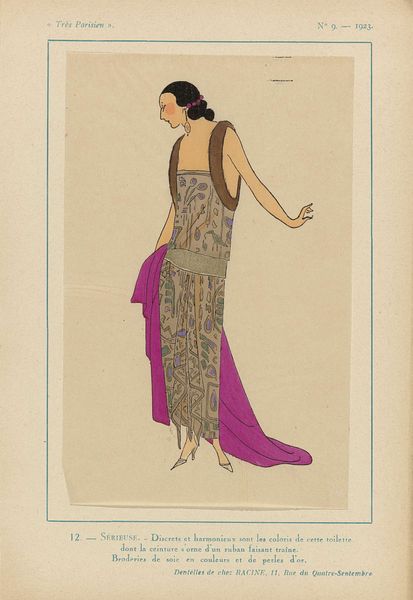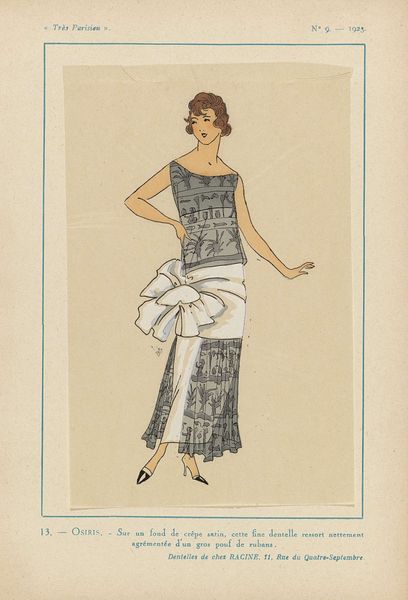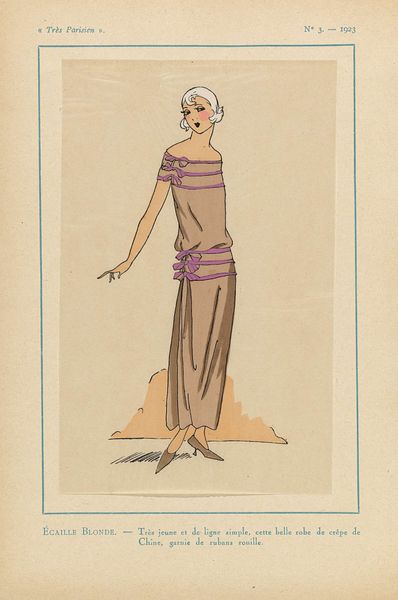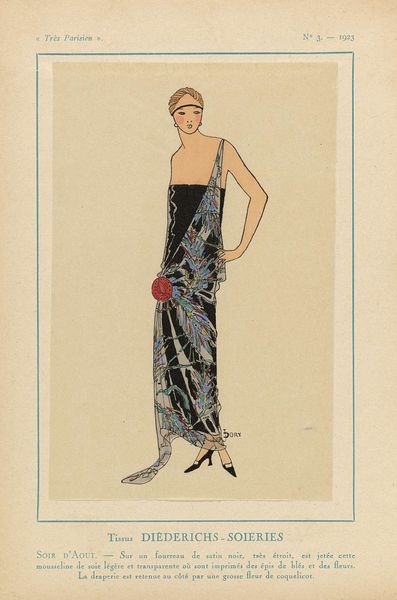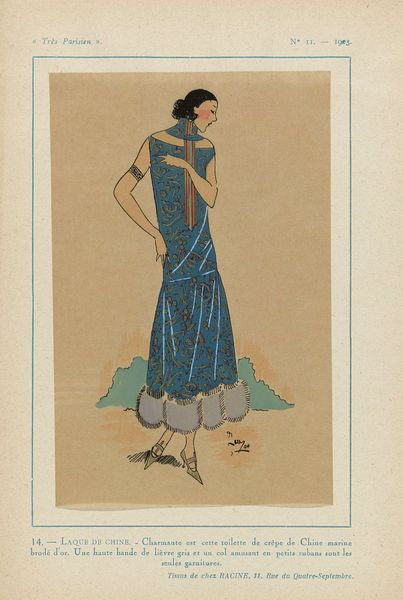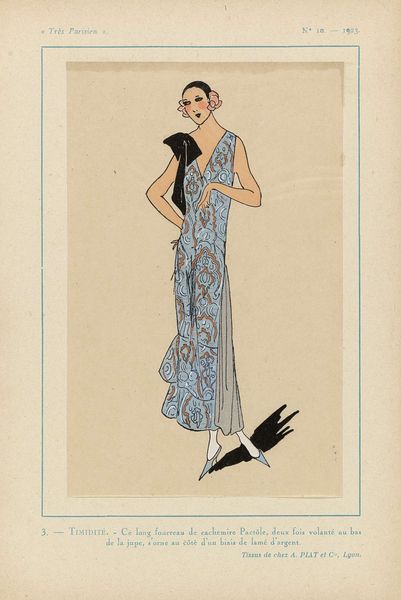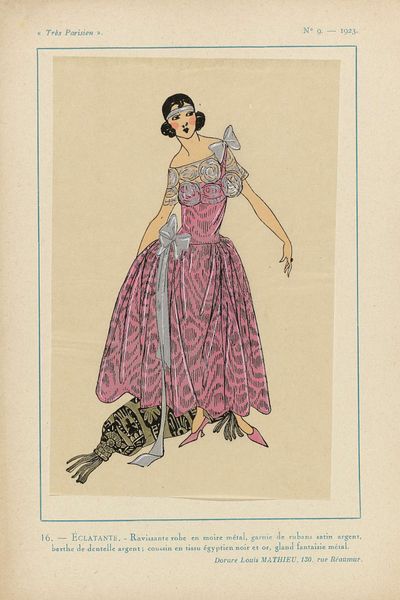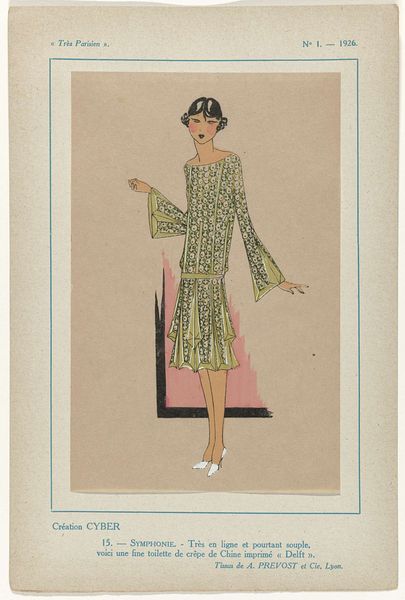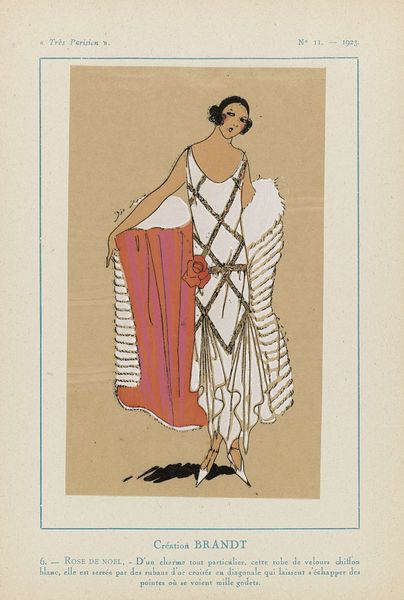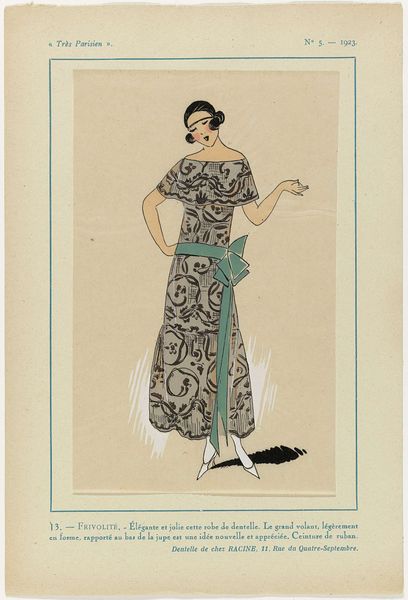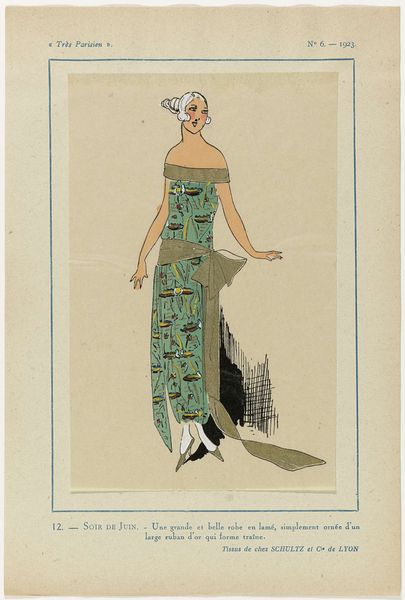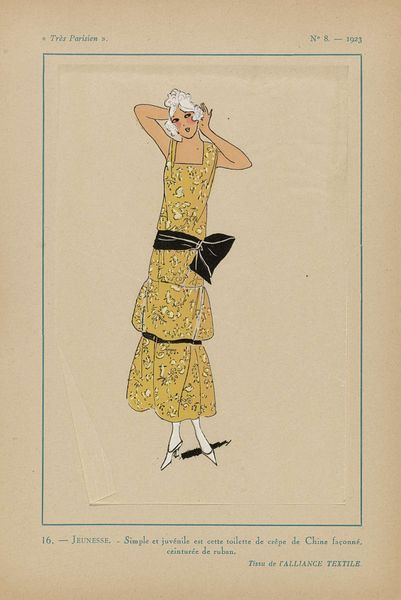
Très Parisien, 1923, No. 3: Tissus de A. PRÉVOST...Rubans de Grenade. 1923
0:00
0:00
anonymous
Rijksmuseum
drawing, mixed-media, print, textile, paper
#
portrait
#
art-deco
#
drawing
#
mixed-media
# print
#
textile
#
figuration
#
paper
#
historical fashion
#
intimism
#
line
#
watercolour illustration
#
decorative-art
#
dress
Dimensions: height 269 mm, width 180 mm
Copyright: Rijks Museum: Open Domain
Curator: This intriguing print is titled "Très Parisien, 1923, No. 3: Tissus de A. PRÉVOST...Rubans de Grenade." It resides in the Rijksmuseum's collection. Editor: My first impression is one of elegant simplicity, but then the dress fabric really jumps out. It's a striking decorative pattern with defined lines against the figure’s graceful pose. The illustration gives a peek into a specific cultural moment in Parisian fashion. Curator: Absolutely. Let's delve into the material aspects of this piece. We are looking at a mixed-media work; combining drawing, watercolor illustration, printmaking techniques, and what appears to be the integration of actual textiles. Editor: Yes, the presence of "Tissus de A. PRÉVOST" in the title points to the importance of the fabric. The print becomes a kind of advertisement for the textile industry, which played such a significant economic and cultural role in Parisian society. Curator: Precisely. It's fascinating to consider the labor involved, from the design of the textile itself, produced by A. PRÉVOST, to the production of this print showcasing the final product in the hands of its consumer. This goes beyond the presentation of mere imagery, we see fashion become accessible, almost attainable, to its audiences. Editor: That’s an astute observation about accessibility. These types of images, published widely in magazines, democratized fashion and brought the Parisian style to a broader public, influencing tastes and trends far beyond the elite circles. They contributed to the development of consumer culture as well as the popularization of “art deco." Curator: Further solidifying the important relationship between creator and patron, maker and consumer, where design and artistic creation collide. Editor: This single image, therefore, presents a rich case study on not only 1920's fashion but on broader aspects of art production and consumption within French society. It acts as an amazing reminder to study further the power that images exert on a large and complex network of culture, and how their effects reverberate. Curator: It indeed encourages further reflection and a wider exploration of what’s represented. A true testament to how objects preserve moments in our shared human experience.
Comments
No comments
Be the first to comment and join the conversation on the ultimate creative platform.
